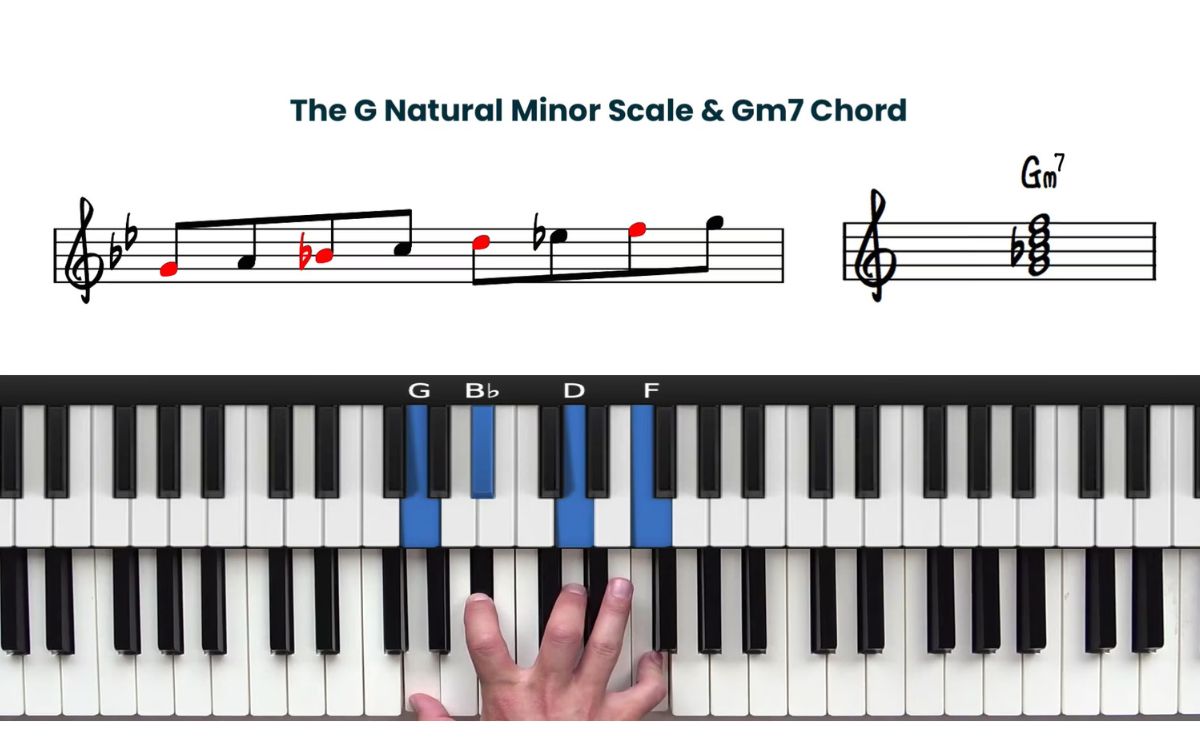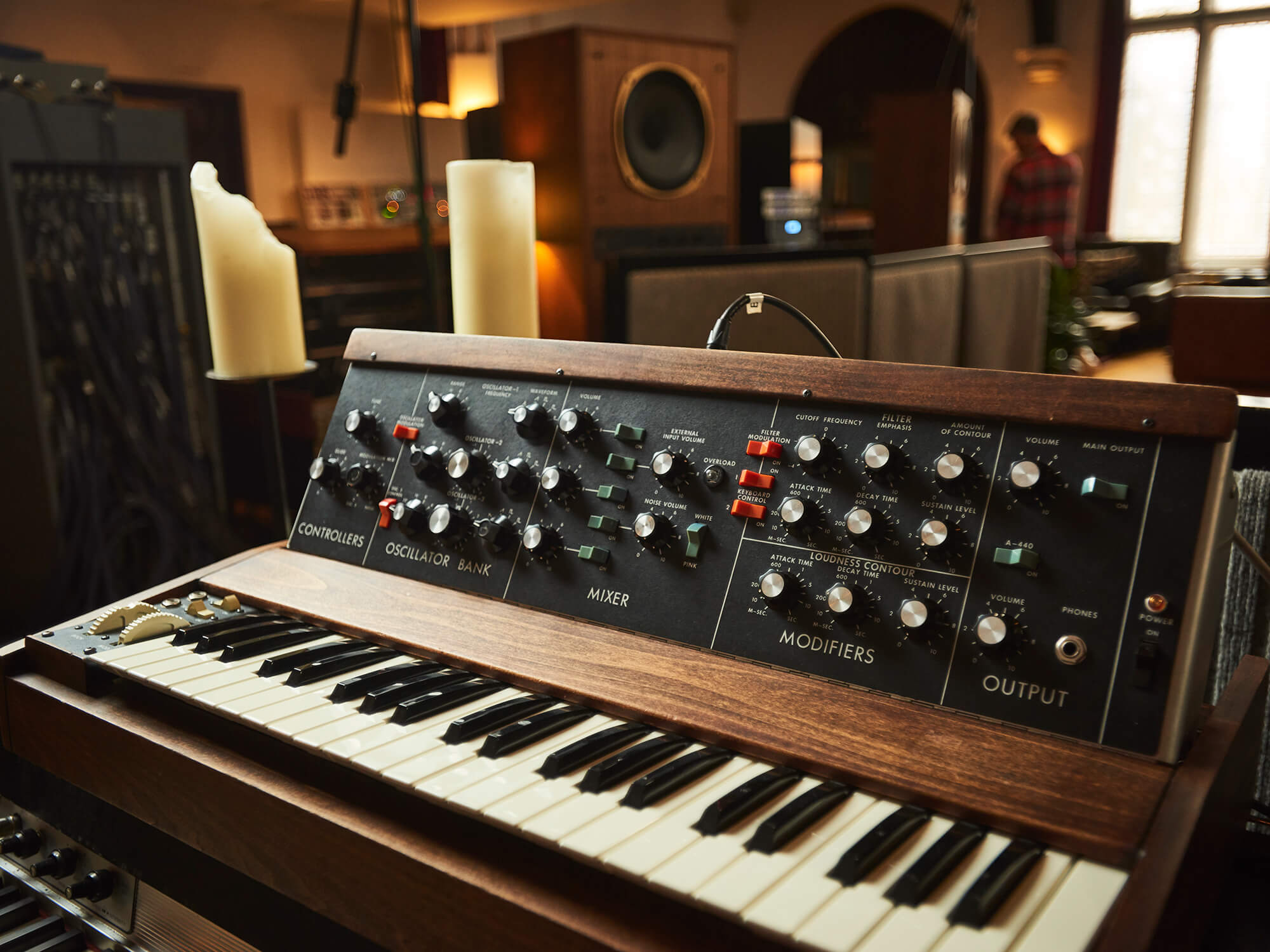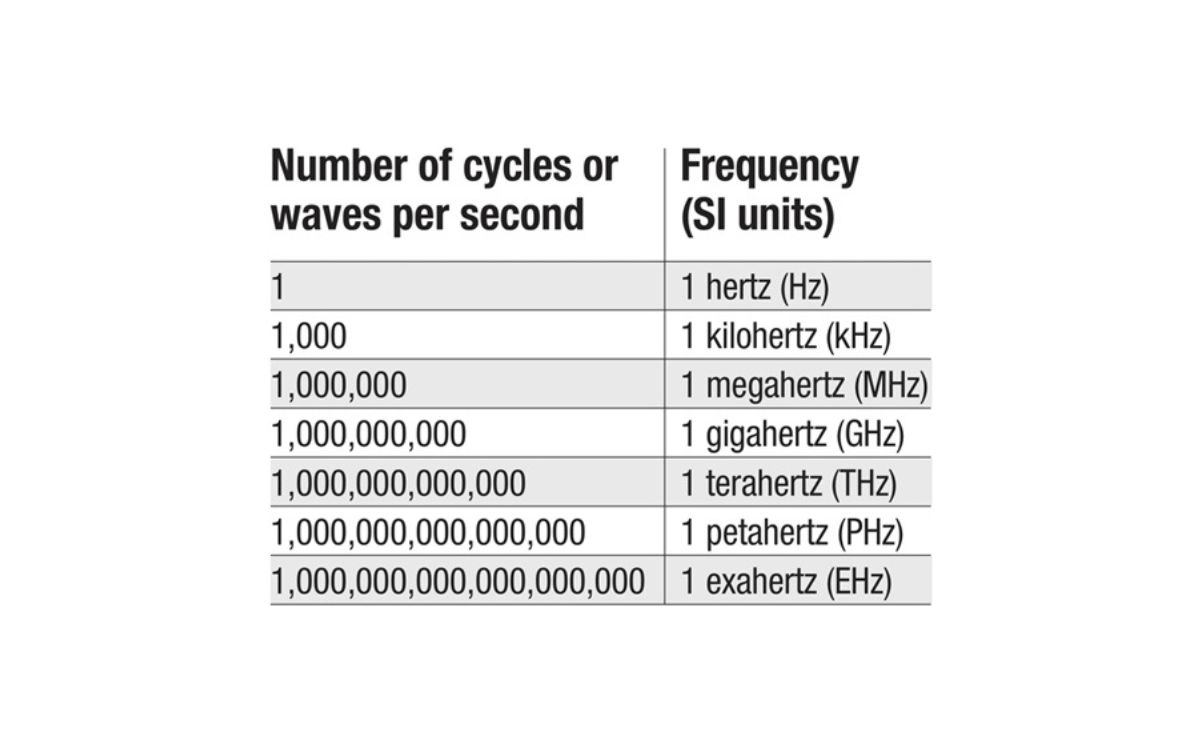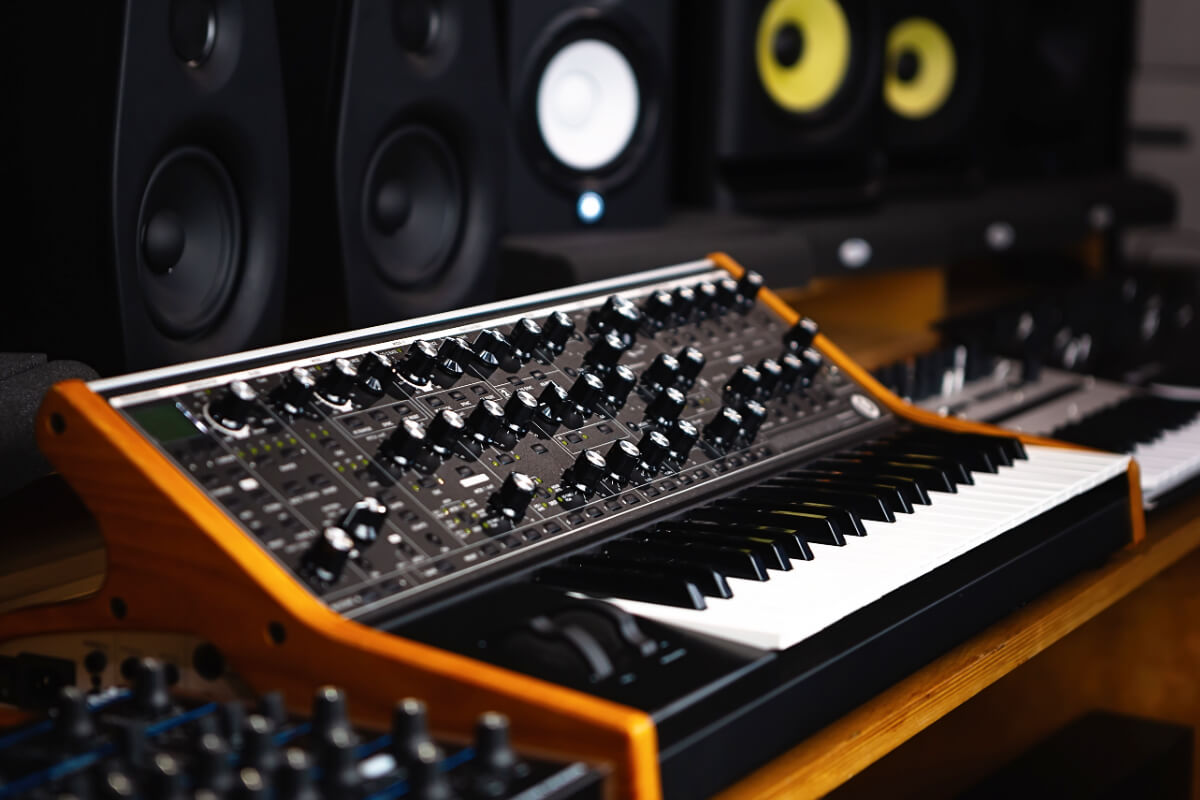Home>Instruments>Synthesizer>What Are Synthesizer Chords For In A Song


Synthesizer
What Are Synthesizer Chords For In A Song
Published: December 11, 2023
Discover the importance of synthesizer chords in a song. Dive into the world of synthesizers and explore how they add depth and texture to your music
(Many of the links in this article redirect to a specific reviewed product. Your purchase of these products through affiliate links helps to generate commission for AudioLover.com, at no extra cost. Learn more)
Table of Contents
Introduction
Welcome to the fascinating world of synthesizers and the role they play in creating captivating and immersive musical compositions. Synthesizers have become a vital tool in modern music production, allowing musicians and producers to explore new sonic landscapes and push the boundaries of creativity. One essential element of synthesizer music is the use of chords, which can add depth, texture, and emotion to a song.
In this article, we will delve into the concept of synthesizer chords and their significance within a song. We will explore their role in enhancing harmonic progressions, creating atmospheric effects, and adding layers of complexity to the overall composition. Whether you are a budding musician, an aspiring producer, or simply a curious music lover, understanding the power of synthesizer chords will undoubtedly enhance your appreciation for the art form.
But before we dive into the world of synthesizer chords, let’s first establish a basic understanding of what exactly a synthesizer is and what chords are in the context of music theory.
What Is a Synthesizer?
A synthesizer is an electronic musical instrument that generates and manipulates sound using various techniques such as oscillators, filters, and amplifiers. Unlike traditional musical instruments that produce sound through physical vibrations, synthesizers generate sound electronically.
Synthesizers can imitate the sounds of traditional instruments like piano, guitar, or strings, as well as create entirely unique and otherworldly sounds. They offer musicians and producers a vast array of options for sound design and experimentation.
Modern synthesizers often come in the form of keyboard-based instruments, where players can manipulate the sound by pressing keys and adjusting various parameters using knobs, sliders, or touchscreens. However, synthesizers can also be standalone units, software plugins, or even apps on a mobile device.
The use of synthesizers in music became prominent in the late ’60s and early ’70s, with the advent of analog synthesizers like the Moog and the ARP. These instruments allowed musicians to explore new sonic territories and redefine the possibilities of musical expression.
Today, synthesizers have evolved into complex and versatile instruments, combining analog and digital technologies. They offer a wide range of sounds, from warm and organic tones to futuristic and abstract textures. Synthesizers have become fundamental tools in various genres of music, including electronic, pop, rock, hip-hop, and even classical compositions.
With their ability to produce unique timbres, shape sounds, and create intricate layers, synthesizers have become indispensable in modern music production. They provide endless opportunities for sonic exploration and allow musicians to create immersive and captivating musical experiences.
What Are Chords?
In music theory, chords are a harmonic combination of three or more notes played simultaneously. They are the building blocks of harmony and provide the foundation for the melodic and harmonic content of a song.
Chords are formed by stacking intervals of various distances on top of each other. The most common type of chord is a triad, which consists of three notes – the root, the third, and the fifth. These three notes create a sense of stability and define the tonal quality of the chord.
For example, in the key of C major, the C major chord is formed by combining the notes C, E, and G. The C note is the root, the E note is the third, and the G note is the fifth. Playing these three notes together produces the distinctive sound of a C major chord.
Chords can be major, minor, diminished, augmented, or suspended, depending on the specific intervals between the notes. Each type of chord conveys a different mood or emotion, and composers use them strategically to evoke specific feelings in their music.
Chords are represented using chord symbols, which consist of a letter or a numeral combined with additional symbols and modifiers. For example, the symbol “C” represents a C major chord, “Am” represents an A minor chord, and “Cmaj7” represents a C major seventh chord.
In the context of a song, chords provide the harmonic framework for melodies, harmonies, and other musical elements. They establish the tonal center and guide the listener through the progression of the music. By combining different chords in a sequence, composers create chord progressions, which form the backbone of a song’s structure and shape the overall emotional impact.
Understanding chords and their relationship to each other is essential for composing, arranging, and improvising music. Whether you are a songwriter, a guitarist, a pianist, or a synthesizer enthusiast, having a solid understanding of chords opens up endless creative possibilities in your musical journey.
Chords in Music Theory
In music theory, chords play a fundamental role in defining the harmonic structure and creating the sense of tension and release in a composition. They provide a framework for creating melodies, harmonies, and arrangements, and understanding their function is crucial for musicians and composers.
Chords are classified based on their relationship to the tonal center or the key of a song. In Western music, the concept of keys and scales forms the foundation of tonal harmony. Each key consists of a specific pattern of whole and half steps, which determines the notes and chords that belong to that key.
The most common chords used in Western music are major and minor chords. Major chords have a bright and cheerful quality, while minor chords sound more somber and melancholic. The specific intervals between the notes within a chord determine whether it is major or minor.
In addition to major and minor chords, there are also diminished and augmented chords. Diminished chords create a tense and unsettling atmosphere, while augmented chords have a sense of tension and unease. These chords add color and complexity to the overall harmonic palette.
Chords are named based on their relationship to the root note or the tonic of the chord. For example, in the key of C major, the C chord is the tonic or the I chord, the D minor chord is the ii chord, the E minor chord is the iii chord, and so on. This system of Roman numeral notation helps musicians understand the harmonic structure and relationships between chords in a song.
When it comes to chord progressions, certain patterns and common sequences have emerged and become standard in various genres of music. For instance, the I-IV-V progression is widely used in blues and rock music, while the ii-V-I progression is prevalent in jazz. These progressions create tension and resolution and contribute to the overall emotional impact of the music.
As a musician, understanding chords in music theory empowers you to make informed choices when composing, arranging, or improvising. It enables you to navigate through different tonalities, experiment with chord substitutions and extensions, and create harmonically rich and engaging musical compositions.
Role of Synthesizer Chords in a Song
Synthesizer chords are an integral component of modern music production, adding depth, texture, and emotion to a song. They play several important roles in shaping the overall sound and atmosphere of a composition. Let’s explore some of the key roles that synthesizer chords fulfill in a song:
1. Creating Atmospheric Effects: Synthesizer chords have the ability to create ethereal and atmospheric sounds that can transport the listener to different sonic landscapes. By using techniques like layering, modulation, and effects processing, synthesizers can produce lush pads, ambient textures, and sweeping soundscapes. These chords establish a sonic backdrop that sets the mood and adds a sense of depth and immersion to the music.
2. Adding Texture and Depth: Synthesizer chords can add layers of richness and complexity to a song. They provide a harmonic foundation that supports the melody and other musical elements. By layering different chords with varying timbres and voicings, synthesizers can create intricate and dynamic textures. This enhances the overall sonic quality and gives the music a full and immersive sound.
3. Enhancing Harmonic Progressions: Synthesizer chords play a crucial role in establishing and reinforcing the harmonic progressions in a song. With their unique timbral characteristics, synthesizers can make chord progressions stand out and add a modern twist to traditional harmonies. They can also provide unique voicings and inversions, adding interest and sophistication to the harmonic structure of the music.
4. Layering with Other Instruments: Synthesizer chords can be integrated seamlessly with other instruments in a song. Whether it’s blending with guitars, pianos, or orchestral instruments, synthesizers can complement and enhance the harmonic and melodic content provided by other instruments. The ability to blend and weave together different sonic elements is a powerful tool in music production, creating a cohesive and immersive listening experience.
Overall, synthesizer chords are versatile and expressive tools that allow musicians and producers to craft unique and captivating sounds. They provide a wide range of creative possibilities and are essential in shaping the sonic landscape of modern music. Whether it’s creating dreamy atmospheric effects, adding intricate layers of texture, reinforcing harmonic progressions, or blending with other instruments, synthesizer chords play a vital role in bringing a song to life.
Creating Atmospheric Effects
One of the significant roles of synthesizer chords in a song is to create atmospheric effects. Synthesizers have the unique ability to generate rich and immersive sounds that can transport listeners to different sonic landscapes. Through careful sound design and manipulation, synthesizer chords can evoke specific moods and emotions, adding a layer of depth and atmosphere to the music.
One technique used to create atmospheric effects is the use of ambient pads. These are long, sustained chords that create a sense of space and presence in the music. By layering multiple chord voicings and blending different sounds, such as soft strings, airy pads, or swirling synths, synthesizers can produce lush and otherworldly textures that fill the sonic spectrum.
Another technique used in creating atmospheric effects is the incorporation of modulation. Synthesizers allow for the manipulation of various parameters, such as amplitude, pitch, filter cutoff, and resonance. By modulating these parameters over time, either manually or using automated systems, the chords can evolve and breathe, creating movement and adding a sense of dynamic character to the music.
Effects processing also plays a crucial role in shaping the atmospheric effects of synthesizer chords. Reverb, delay, and chorus are commonly used effects that can enhance the spaciousness and depth of the chords. Reverb creates the illusion of playing in a large room or a cathedral, while delay adds an echo-like effect, providing a sense of distance and depth. Chorus can add a shimmering, swirling quality to the chords, enhancing their atmospheric nature.
Furthermore, synthesizers offer various sound-shaping tools, such as filters, envelopes, and waveform manipulation. By applying filters to the chords, specific frequencies can be emphasized or attenuated, giving the chords a unique character and color. Envelopes control the attack, sustain, decay, and release of the sound, allowing for precise control over the shape and evolution of the chords. Manipulating waveforms, such as adding subtle vibrato or incorporating wavetable synthesis, can infuse the chords with a sense of movement and intricacy.
Overall, synthesizer chords possess a remarkable capability to create captivating atmospheric effects. Through the use of ambient pads, modulation, effects processing, and sound-shaping tools, synthesizers can transport listeners to ethereal and immersive sonic worlds. These atmospheric effects not only enhance the emotional impact of the music but also provide a unique sonic signature that distinguishes a song and captures the attention of the audience.
Adding Texture and Depth
Synthesizer chords play a crucial role in adding texture and depth to a song. They contribute layers of richness and complexity, creating a sonic tapestry that enhances the overall listening experience. Through careful voicing, layering, and sound design, synthesizer chords can transform a simple progression into a multi-dimensional composition.
One way synthesizer chords add texture and depth is through the use of different timbres and voicings. By selecting and programming unique sounds, such as warm pads, bright leads, or rich stabs, synthesizers can create a diverse range of tonal colors. Layering multiple chord voicings, each with their distinct timbre and register, can create a lush and full-sounding chord progression. This layering technique adds depth and complexity to the overall mix, making the chords more engaging and impactful.
Additionally, synthesizer chords can serve as a foundation for counterpoint and harmonizing melodies. By intertwining melodies with the chord progression, the synthesizer chords provide a harmonic context for other melodic elements, such as lead lines or vocal harmonies. This interaction between the chords and melodies creates interplay that enhances the musical arrangement, giving it depth and sophistication.
Sound design plays a significant role in the creation of textured synthesizer chords. Through techniques such as waveform manipulation, modulation, and filtering, synthesizers can generate unique and evolving sounds that add depth and interest to the chords. For example, subtly modulating the amplitude or filter cutoff of the chords can create movement and variation, making the chords feel alive and dynamic. Adding effects such as phasers, flangers, or granular synthesis can further enhance the texture and spatial qualities of the chords.
Furthermore, synthesizer chords can contribute to the overall mix and spatialization of the music. By carefully panning and placing different chord voicings, the synthesizer can create a wide stereo field, immersing the listener in a three-dimensional sound environment. This spatial placement of the chords can add a sense of depth and width to the mix, making it more immersive and captivating.
Ultimately, by adding texture and depth to a song, synthesizer chords elevate the overall sonic experience. Whether it’s through the layering of different timbres and voicings, harmonizing melodies, creative sound design, or spatial placement, synthesizers have the power to transform a simple chord progression into a rich and dynamic musical composition that engages and captivates the listener.
Enhancing Harmonic Progressions
Synthesizer chords play a significant role in enhancing the harmonic progressions within a song. They provide a foundation to the tonal structure and contribute to the overall musical expression. By adding complexity, color, and unique voicings, synthesizer chords elevate the harmonic content and make the progressions more interesting and engaging.
One way synthesizer chords enhance harmonic progressions is by providing alternative voicings and inversions. The ability to play chords in different octaves, with different note orders, or with added extensions, gives composers and musicians a wide range of possibilities for chord voicings. These variations can create unique harmonic textures, add tension and release, and contribute to the overall emotional impact of the music.
Another way synthesizer chords enhance harmonic progressions is through the use of chord substitutions and extensions. Substituting a traditional chord with a different chord of the same function, or adding extensions like 7th, 9th, or 11th, can introduce fascinating harmonic colors and tensions. These substitutions and extensions can create unexpected harmonic twists and turns, adding depth and complexity to the progressions.
Synthesizer chords also allow for the exploration of non-traditional and unconventional harmonic progressions. With their versatility, synthesizers can generate unique and experimental chord progressions that defy traditional tonality. This opens up new possibilities for composers and producers to push the boundaries of harmony and create innovative and captivating musical compositions.
The use of synthesizer chords in arpeggiation and rhythmic patterns can further enhance the harmonic progressions. By breaking the chords into individual notes and placing them in rhythmic sequences, the chords take on a dynamic and melodic quality. This rhythmic movement creates interest and energy within the harmonic structure, making the progressions more engaging and compelling.
In addition, synthesizer chords can be used to reinforce the tonal center or create temporary tonal shifts within a song. Through careful modulation and modulation effects, the chords can smoothly transition between different tonalities, adding variety and complexity to the harmonic progressions. These tonal shifts can create moments of tension and release, surprise the listener, and contribute to the overall musical drama.
Overall, synthesizer chords enhance the harmonic progressions by providing alternative voicings, chord substitutions, extensions, non-traditional progressions, arpeggiation, and tonal shifts. By exploring these possibilities, composers and producers can create captivating harmonies that elevate the emotional impact of the music and engage the listener on a deeper level.
Layering with Other Instruments
Synthesizer chords are an excellent tool for layering with other instruments in a song, adding depth, richness, and complexity to the overall sound. By blending different sonic elements and integrating synthesizer chords with traditional instruments, composers and producers can create a cohesive and dynamic musical arrangement.
One of the advantages of synthesizer chords is their ability to seamlessly blend with various instruments. Whether it’s guitars, pianos, strings, or brass, synthesizers can complement and enhance the harmonic and melodic content provided by these instruments. The unique timbral characteristics of synthesizers can enrich the overall sound palette and add a modern touch to traditional instrumentations.
Layering synthesizer chords with guitars can create a powerful combination. The sustained and atmospheric nature of synthesizer chords can provide a lush backdrop for the rhythmic strumming or intricate melody lines of guitars. This combination adds depth and complexity to the harmonic and rhythmic components of the music, creating a larger sonic landscape.
Similarly, layering synthesizer chords with pianos can create a harmonically rich and luxurious sound. Synthesizer chords can supplement the delicate and precise nature of piano playing, adding lush pads or subtle textures to fill out the sound. This combination adds depth and complexity to the overall arrangement, allowing for a more versatile and expressive musical experience.
By layering synthesizer chords with orchestral instruments, composers can create a hybrid sound that blends the orchestral warmth with the synthetic textures. The combination of synthesizer chords with strings, brass, or woodwinds can create a fusion of timbres, adding a modern and dramatic impact to the arrangement. This layering technique enhances the overall sonic depth of the music and provides a unique blend of acoustic and electronic elements.
In electronic music genres, synthesizer chords can also be layered with drum machines and percussion instruments. This combination adds a rhythmic and textural complexity to the music, creating a compelling fusion of harmonic and percussive elements. By blending the synthesized chords with electronic drums, hi-hats, and percussive sounds, producers can craft a cohesive and energetic sound that keeps the listeners engaged and moving.
Ultimately, the layering of synthesizer chords with other instruments provides endless possibilities and creativity in music production. It allows for the creation of unique and captivating soundscapes, where different sonic elements come together to form a cohesive and immersive musical experience. By blending the organic and electronic elements, composers and producers can create rich, complex, and memorable compositions that resonate with the listeners.
Conclusion
Synthesizer chords play a crucial role in the world of music, adding depth, texture, and emotion to a song. Through their ability to create atmospheric effects, add texture and depth, enhance harmonic progressions, and layer with other instruments, synthesizer chords bring a unique sonic character to compositions.
With synthesizers, musicians and producers have the power to explore new sonic landscapes and push the boundaries of creativity. The versatility of synthesizer chords allows for the creation of lush pads, ambient textures, and captivating soundscapes that transport listeners to ethereal realms.
By layering synthesizer chords with other instruments, like guitars, pianos, strings, or percussion, musicians can create harmonically rich and complex arrangements that blend the organic with the electronic. This fusion of sonic elements adds depth, richness, and complexity to the overall sound, creating a truly captivating and immersive musical experience.
In addition, synthesizer chords provide a powerful tool for enhancing harmonic progressions. By offering alternative voicings, chord substitutions, extensions, and unique progressions, synthesizer chords infuse the music with interest and nuance, elevating the emotional impact and creating musical moments that resonate with the listener.
In conclusion, the role of synthesizer chords in a song is multifaceted and essential. They are instrumental in defining the atmosphere, adding layers of texture, shaping harmonic progressions, and seamlessly blending with other instruments. With synthesizer chords, musicians and producers have the ability to create captivating and innovative compositions that captivate and engage the audience.
So, whether you are a musician, producer, or simply a music enthusiast, dive into the world of synthesizer chords, unleash your creativity, and let the power of synthesizers take your musical journey to new heights.











